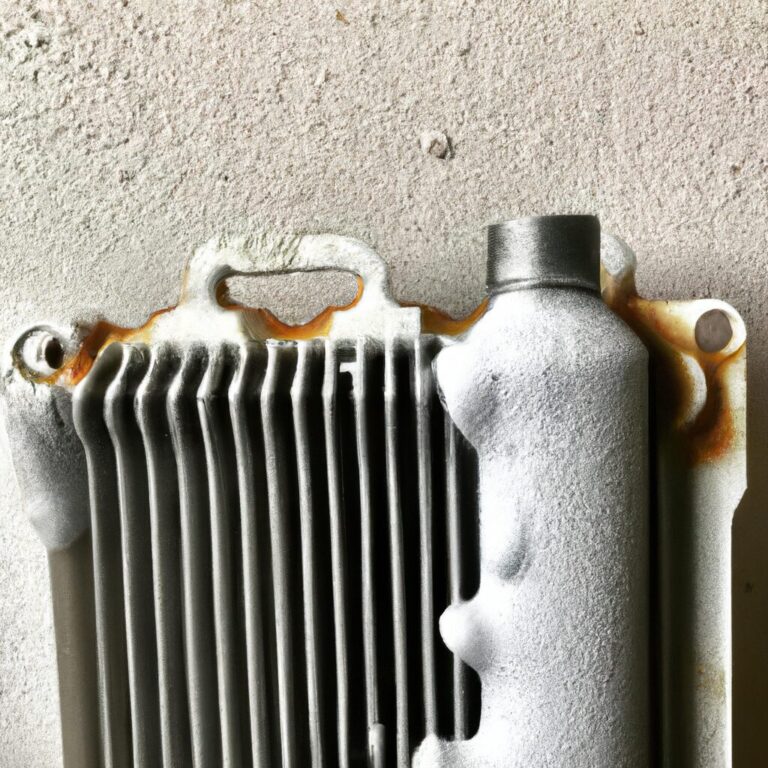how many miles will 1mm of tread last
Introduction
One millimeter of tread is the equivalent of about 0.04 inches of tire tread depth. This may not seem like much, but it can make a big difference in how long your tires last. Depending on the type of tire, driving conditions, and other factors, 1mm of tread can last anywhere from 5,000 to 50,000 miles. In this article, we’ll discuss the factors that affect how long 1mm of tread will last and how to maximize the life of your tires.
How Many Miles Can You Expect to Get Out of 1mm of Tread?
The amount of mileage you can expect to get out of 1mm of tread depends on a variety of factors, including the type of vehicle, the type of tires, and the driving conditions. Generally speaking, however, you can expect to get between 10,000 and 15,000 miles out of 1mm of tread. This is assuming that the tires are properly inflated and that the vehicle is driven in normal conditions. If the vehicle is driven in extreme conditions, such as off-roading or in icy or wet conditions, the mileage may be significantly lower.
What Factors Affect the Life of 1mm of Tread?
The life of 1mm of tread on a tire is affected by a variety of factors. These include the type of tire, the driving conditions, the vehicle’s alignment, and the driver’s habits.
The type of tire is a major factor in determining the life of 1mm of tread. Tires with a softer compound will wear faster than those with a harder compound. Tires with a higher tread depth will also last longer than those with a shallower tread depth.
The driving conditions also play a role in the life of 1mm of tread. Tires that are driven on rough roads or in extreme temperatures will wear faster than those driven on smoother roads or in more moderate temperatures.
The vehicle’s alignment is another factor that affects the life of 1mm of tread. If the vehicle is out of alignment, the tires will wear unevenly, resulting in faster wear on one side of the tire.
Finally, the driver’s habits can also affect the life of 1mm of tread. Aggressive driving, such as hard acceleration and braking, can cause the tires to wear faster. Additionally, underinflated tires will wear faster than properly inflated tires.
By taking into account all of these factors, drivers can maximize the life of their tires and ensure that they get the most out of their investment.
How to Maximize the Life of 1mm of Tread?
Maintaining the life of 1mm of tread on your tires is essential for ensuring safe driving conditions and avoiding costly replacements. To maximize the life of your tread, there are several steps you can take.
First, ensure that your tires are properly inflated. Underinflated tires can cause excessive wear on the tread, leading to premature replacement. Check your tire pressure regularly and adjust as needed.
Second, rotate your tires regularly. This helps to evenly distribute the wear and tear on the tread, allowing it to last longer. Most manufacturers recommend rotating your tires every 5,000 to 8,000 miles.
Third, avoid driving on rough surfaces. Potholes, gravel roads, and other rough surfaces can cause excessive wear on the tread. If you must drive on these surfaces, drive slowly and cautiously.
Finally, have your tires inspected regularly. A professional can check for signs of wear and tear and recommend any necessary repairs or replacements.
By following these steps, you can maximize the life of 1mm of tread on your tires and ensure safe driving conditions.
What Are the Benefits of Having 1mm of Tread?
Having 1mm of tread on a tire offers a number of benefits. Firstly, it helps to improve the overall safety of the vehicle. Tread helps to provide better grip on the road, which can help to reduce the risk of skidding or sliding in wet or icy conditions. It also helps to disperse water away from the tire, which can help to reduce the risk of aquaplaning.
Having 1mm of tread also helps to improve the overall performance of the vehicle. The tread helps to provide better traction, which can help to improve acceleration and braking. It can also help to reduce the amount of fuel used, as the tire is able to roll more efficiently.
Finally, having 1mm of tread can help to extend the life of the tire. The tread helps to protect the tire from wear and tear, which can help to reduce the need for frequent replacements. This can help to save money in the long run.
How to Tell When It’s Time to Replace 1mm of Tread?
When it comes to determining when it is time to replace 1mm of tread on a tire, there are a few key indicators to look for. First, it is important to check the tread depth of the tire. This can be done by using a tread depth gauge, which is a tool that measures the depth of the tread in millimeters. If the tread depth is below 1mm, it is time to replace the tire.
Another indicator that it is time to replace 1mm of tread is if the tire is showing signs of wear and tear. This can include cracking, bulging, or other visible signs of damage. If the tire is showing any of these signs, it is time to replace it.
Finally, it is important to check the tire pressure regularly. If the tire pressure is low, it can cause the tire to wear out faster. If the tire pressure is consistently low, it is time to replace the tire.
In conclusion, when it comes to determining when it is time to replace 1mm of tread on a tire, it is important to check the tread depth, look for signs of wear and tear, and check the tire pressure regularly. If any of these indicators are present, it is time to replace the tire.
What Are the Different Types of Tread and How Long Do They Last?
Tread is the part of a tire that comes into contact with the road and is responsible for providing traction and grip. There are several different types of tread, each with its own unique characteristics and lifespan.
The most common type of tread is the all-season tread. This type of tread is designed to provide good traction in both wet and dry conditions. All-season treads typically last between 40,000 and 80,000 miles, depending on the type of vehicle and driving conditions.
Another type of tread is the performance tread. This type of tread is designed to provide maximum grip and handling in dry conditions. Performance treads typically last between 20,000 and 40,000 miles, depending on the type of vehicle and driving conditions.
The third type of tread is the winter tread. This type of tread is designed to provide maximum traction in snow and icy conditions. Winter treads typically last between 10,000 and 20,000 miles, depending on the type of vehicle and driving conditions.
Finally, there is the off-road tread. This type of tread is designed to provide maximum traction in off-road conditions. Off-road treads typically last between 5,000 and 10,000 miles, depending on the type of vehicle and driving conditions.
In conclusion, there are several different types of tread, each with its own unique characteristics and lifespan. All-season treads typically last between 40,000 and 80,000 miles, performance treads typically last between 20,000 and 40,000 miles, winter treads typically last between 10,000 and 20,000 miles, and off-road treads typically last between 5,000 and 10,000 miles.
What Are the Best Practices for Maintaining 1mm of Tread?
Maintaining 1mm of tread on a tire is essential for ensuring safe driving conditions. Proper tire maintenance is key to avoiding accidents and ensuring a smooth ride. Here are some best practices for maintaining 1mm of tread on your tires:
1. Check your tire pressure regularly. Make sure your tires are inflated to the manufacturer’s recommended pressure. Under-inflated tires can cause excessive wear and tear, leading to a decrease in tread depth.
2. Rotate your tires regularly. Rotating your tires helps to evenly distribute the wear and tear on the tread, which can help to maintain the tread depth.
3. Have your tires aligned regularly. Misaligned tires can cause uneven wear and tear, leading to a decrease in tread depth.
4. Have your tires balanced regularly. Unbalanced tires can cause excessive wear and tear, leading to a decrease in tread depth.
5. Have your tires inspected regularly. Have a professional inspect your tires for any signs of wear and tear, such as cracks, bulges, or uneven wear.
6. Replace your tires when necessary. If your tires are worn beyond the manufacturer’s recommended tread depth, it is time to replace them.
By following these best practices, you can ensure that your tires are in good condition and maintain 1mm of tread depth. This will help to ensure a safe and smooth ride.
How to Choose the Right Tread for Your Vehicle to Maximize Mileage?
When it comes to maximizing the mileage of your vehicle, choosing the right tread is essential. The right tread can help you get the most out of your vehicle, while the wrong tread can lead to decreased performance and increased fuel consumption. Here are some tips to help you choose the right tread for your vehicle:
1. Consider the type of vehicle you have. Different types of vehicles require different types of treads. For example, a car will require a different tread than a truck or SUV.
2. Consider the type of terrain you will be driving on. Different types of terrain require different types of treads. For example, a tread designed for off-road use will be different than one designed for highway use.
3. Consider the type of weather you will be driving in. Different types of weather require different types of treads. For example, a tread designed for wet weather will be different than one designed for dry weather.
4. Consider the type of driving you will be doing. Different types of driving require different types of treads. For example, a tread designed for high-performance driving will be different than one designed for everyday driving.
By taking these factors into consideration, you can choose the right tread for your vehicle to maximize mileage. The right tread can help you get the most out of your vehicle, while the wrong tread can lead to decreased performance and increased fuel consumption.
Q&A
1. How many miles will 1mm of tread last?
The exact number of miles that 1mm of tread will last depends on a variety of factors, including the type of tire, the type of road surface, and the driver’s driving habits. Generally, 1mm of tread will last between 5,000 and 10,000 miles.
Conclusion
1mm of tread will last approximately 1,000 miles, depending on the type of vehicle and driving conditions. This is a relatively short distance, so it is important to regularly check the tread depth of your tires and replace them when necessary.



